As the Scots would say, “The proof is in the tumbler.” Scotch whisky is world-class, the true spirit of Caledonia. With its storied past, diversity of styles, and complex aromas and flavors, it begs to be savored.
What is Scotch?
Caledonia is the Latin name for Scotland, given to the land north of Hadrian’s Wall by the Romans. The drink of Caledonia was Scotch whisky. You may notice that there are two different spellings – whisky, and whiskey. Just so there’s no confusion, Scotch whisky is spelled without the “e”.
I remember as a kid, that all I knew about Scotch was that my parents drank it at parties. Scotch and soda was a popular drink back in the day. I also remember that at one party, I snuck a sip of Dad’s Scotch, and thought it was the foulest thing I had ever tasted!

When I arrived at drinking age, I went through many liquor phases – vodka, bourbon, rum, gin (only once), brandy, and Canadian whiskey. I tried Scotch from time-to-time, but never developed a liking for it – until I tried single malt Scotch. Wow! That changed everything. By that time, my palate had matured, and I fell in love. I was also traveling to the U.K. regularly and could pick up good, relatively inexpensive Scotch at the airport duty free shops. I soon had a respectable collection of malt whisky in my little home bar.
There are two basic types of Scotch. The first type, which is my favorite, is Single Malt Scotch. The other is Single Grain Scotch. There are several differences in how these whiskies are made, and a substantial flavor distinction.
What Exactly is Single Malt Scotch?
The essential ingredient of malt whisky is malted barley. Malted barley is also the essential grain in beer. Basically, Scotch distillers make a strong beer, and then distill it to extract the alcohol.
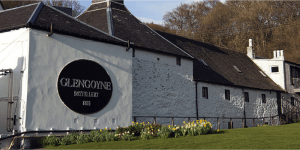
Single malt whisky is made from 100% malted barley (vs. unmalted grains). Peatiness, which is the “smoky” essence characteristic of Scotch, comes from peat fires used during the kilning of the malt. Single malt whisky is distilled in a traditional pot still, and aged for a minimum of three years in casks holding no more than 700 litres (180 U.S. gallons); however, it is often aged much longer than the minimum three years. 10- and 12-year old single malts are common, and some rare whiskies are aged as much as 20-50 years. With each passing year in the cask, a good bit of whisky evaporates. This is referred to as the “Angels’ Share.” This is also why old whiskies are so expensive. Volume shrinks, but the distillery must pay storage and taxes on the full cask every year, and have less to bottle and sell after aging is complete.

Whisky maturing in casks
Different casks of whisky are typically blended at bottling time to achieve the desired taste and balance. The “single” in single malt Scotch means that all the whisky in that bottle came from a single distillery.
Scotch whisky casks are typically re-used American whiskey casks – mostly Bourbon. Bourbon casks introduce a vanilla character to the malt whisky. Other casks, such sherry, port, sauternes, madeira, rum or cognac are often used for a short time to finish Scotch – imparting a heavier body, darker color and flavors from the cask.
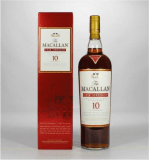
Cask-strength whiskey
Once the whisky is bottled, it stops aging altogether. The age on the bottle refers to the time it spent aging in the cask. Scotch must be bottled at a minimum of 80 proof – 40% alcohol by volume (ABV). It may also be bottled at higher strengths or at cask strength – which is typically between 50 and 60% ABV. Usually, the cask-strength whisky is diluted with water to achieve the desired alcohol level.
Malt Whisky Regions
Scotch whisky is made in several distinct regions of Scotland. These regions (six in all) have different distilling traditions and different environmental factors which influence the style and flavor of whisky each region produces.

Whisky regions of Scotland
Within each region, different distilleries create variations on the regional style. The regions are: Highlands, Lowlands, Speyside, Islay, Campbeltown and the Islands.
The Highlands is a large region with styles that vary by geography within the region. Light smokiness, floral, fruit, and honey notes, along with a dry finish, are typical of Highland whiskies.
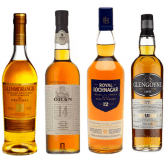
Examples of Highland whisky include Ardmore, Glen Eden, Dalwhinnie, Oban, Glenmorangie, and Dalmore.
The Lowlands is a large region producing Scotches that are delicate and somewhat sweet, mostly unpeated, and fruity. These are good whiskies for those just getting into Scotch.
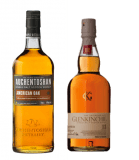
Popular Lowland whiskies are Glenkichie, Auchentoshan, Clydeside, and Kingsbarns.
Speyside whiskies come from an area of the Highlands that hosts many distilleries, thus earning Speyside its own designation. The main styles tend to be lightly peated with honey, fruit, and spice character. They tend to finish on the sweet side and are often finished in sherry (or other wine) casks.
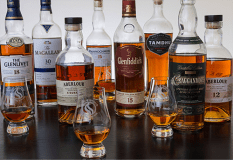
Some of the better-known Speyside whiskies include The Macallan, The Balvenie, Glenfiddich, Glenrothes, and The Glenlivet.
Islay (pronounced Eye-luh) whiskies are known for their “marine” character, which comes across as a bit saline with hints of iodine and other maritime flavors. Islay whiskies tend to be among the most peaty of Scotch whiskies.
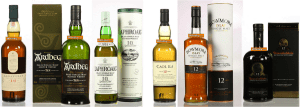
Some Islay whiskies are Laphroaig, Lagavulin, Bunnahabhain, Ardbeg, Caol Ila, Bruichladdich, and Bowmore.
Campeltown produces only a few distinctive whiskies which tend to be hard to find.

Examples of Campbeltown whiskies are Springbank, Glen Scotia, and Glengyle.
Finally, The Islands – a group of islands at the northern tip of Scotland – produce whiskies that are less peaty than Islay with saline notes and flavors of spice, nuts, and fruit.
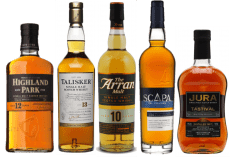
The Islands – Jura, Skye and Orkney – produce Highland Park, Scapa, Isle of Jura, Arran, and Talisker.
Blended Malt Whisky
While single malt whisky comes entirely from a single distillery, there are malt whiskies that are blends of whiskies from more than one distillery. These are designated as blended malt whiskies and they cannot use any grains other than malted barley.

Blending malt whiskies from more than one distillery allows innovation and the use of the full range of whiskies from different regions. Some producers of blended malt whiskies include Chivas, Johnny Walker, Bell’s, Grant’s and Famous Grouse. Different numbers of malt whiskies can be used in the blends, but the age shown on the bottle represents the youngest whisky in the blend. Chivas produced a blend called The Century of Malts, which contains 100 malt whiskies.
Single Grain Whisky
Single Grain Scotch is another form of Scotch that is used mostly for blending, but can sometimes be found bottled on its own. It is whisky that is produced in a single distillery from a mix of malted barley and other grains, which are typically wheat and corn.

Traditional Pot Still (left) and modern column still
Single Grain Scotch is produced in a more modern column still in a continuous process, which yields greater volume and around 94% alcohol – contrasted with previously discussed Single Malt Scotch, which is produced in traditional copper pot stills in a batch process, yielding lower volumes and around 72% alcohol. Single grain whiskies are typically aged in Bourbon barrels and, on their own, are light-bodied and mild.
Blended Scotch Whisky
Finally, there is blended Scotch whisky – which is a blend of single malt whisky and grain whisky.
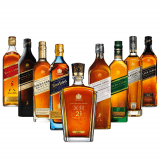
Johnny Walker Blended Malt and Blended Scotch whisky
The bulk of the blend is grain whisky, with single malt added for complexity. Blended Scotch whiskies make up about 90% of the Scotch market! Examples are Johnny Walker Red, Chivas Regal, Dewar’s, Cutty Sark, J&B, and a raft of other popular brands.
Tasting Malt Whisky
Sampling malt whisky is very straightforward. Pour a small amount of whisky into a whisky glass. Pour it neat, without any additions. You can add a few drops of cold water to release the flavors, but don’t add ice, soda or other mixers.
Take in the aroma of the whisky. Then, take tiny sips, letting the whisky roll over your tongue as you lightly inhale air. Savor the aftertaste – or finish – after you swallow the whisky. If you are tasting several single malts, keeping your sips small will help preserve your palate throughout the tasting.
I hope you find Scotch to be as tasty and interesting as I do. Do you have a favorite Scotch? What Scotch are you tasting today? Tell me in the comments below!




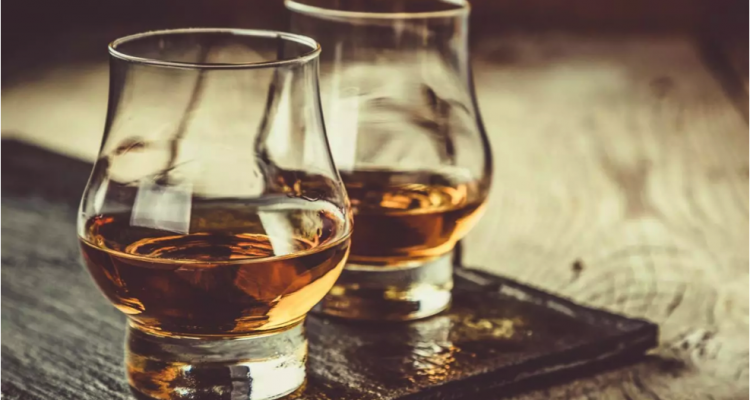
Leave a Reply